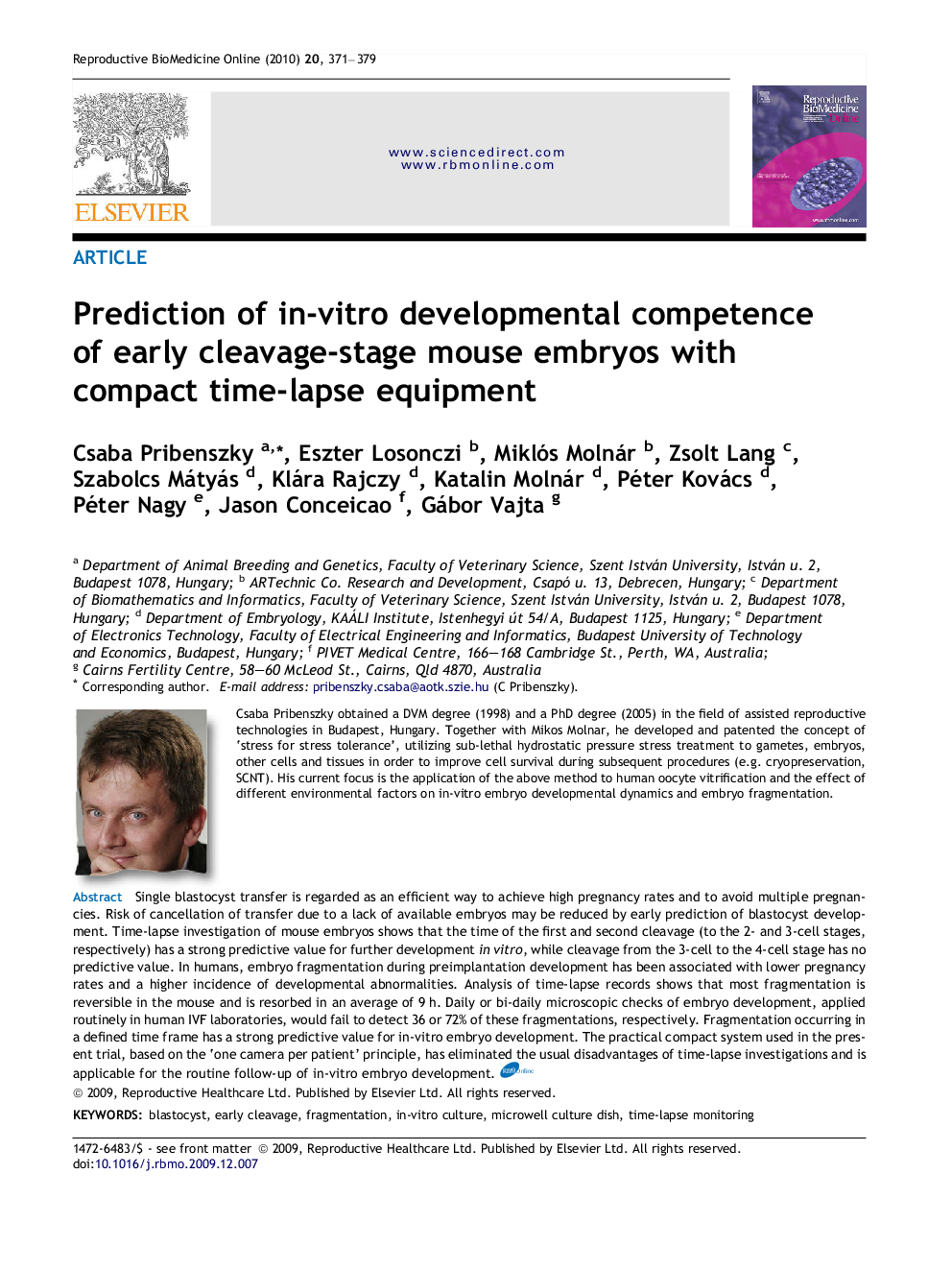| Article ID | Journal | Published Year | Pages | File Type |
|---|---|---|---|---|
| 3971540 | Reproductive BioMedicine Online | 2010 | 9 Pages |
Single blastocyst transfer is regarded as an efficient way to achieve high pregnancy rates and to avoid multiple pregnancies. Risk of cancellation of transfer due to a lack of available embryos may be reduced by early prediction of blastocyst development. Time-lapse investigation of mouse embryos shows that the time of the first and second cleavage (to the 2- and 3-cell stages, respectively) has a strong predictive value for further development in vitro, while cleavage from the 3-cell to the 4-cell stage has no predictive value. In humans, embryo fragmentation during preimplantation development has been associated with lower pregnancy rates and a higher incidence of developmental abnormalities. Analysis of time-lapse records shows that most fragmentation is reversible in the mouse and is resorbed in an average of 9 h. Daily or bi-daily microscopic checks of embryo development, applied routinely in human IVF laboratories, would fail to detect 36 or 72% of these fragmentations, respectively. Fragmentation occurring in a defined time frame has a strong predictive value for in-vitro embryo development. The practical compact system used in the present trial, based on the ‘one camera per patient’ principle, has eliminated the usual disadvantages of time-lapse investigations and is applicable for the routine follow-up of in-vitro embryo development.
